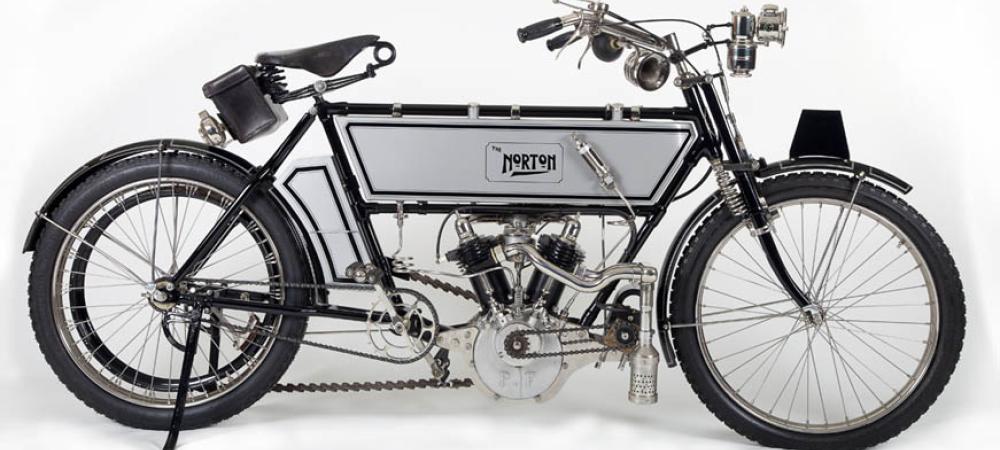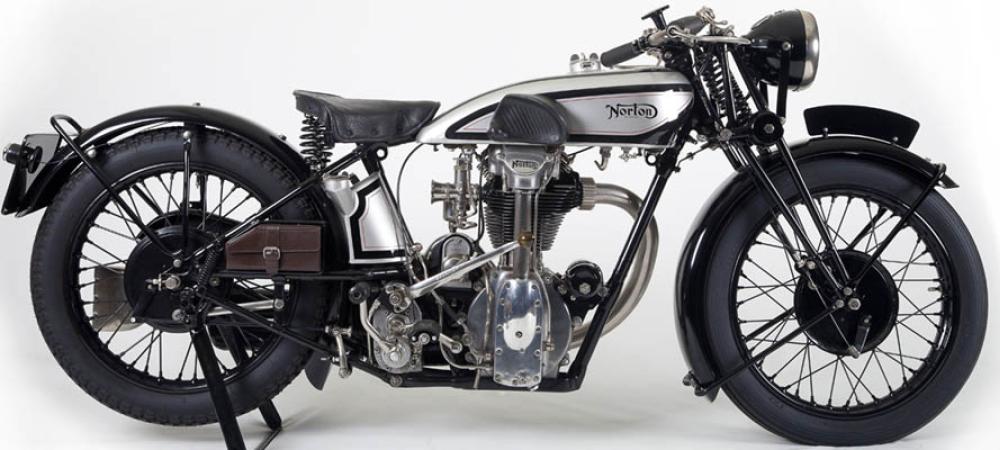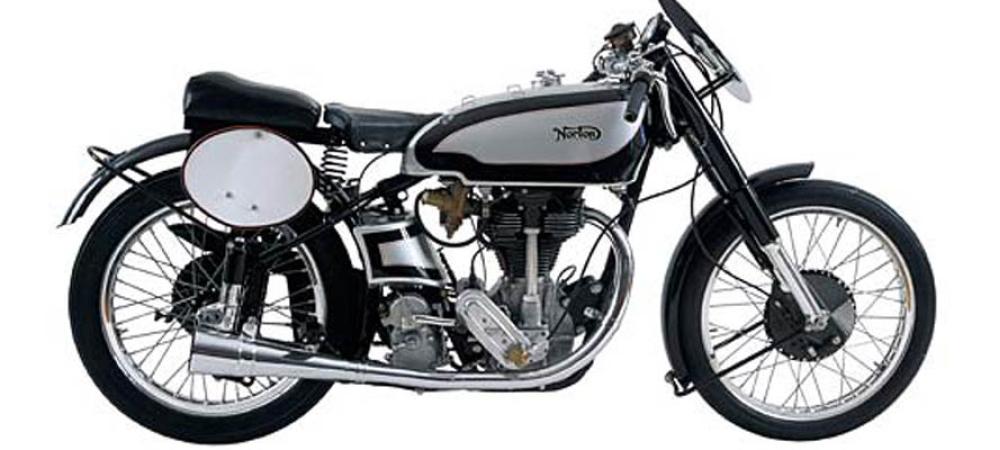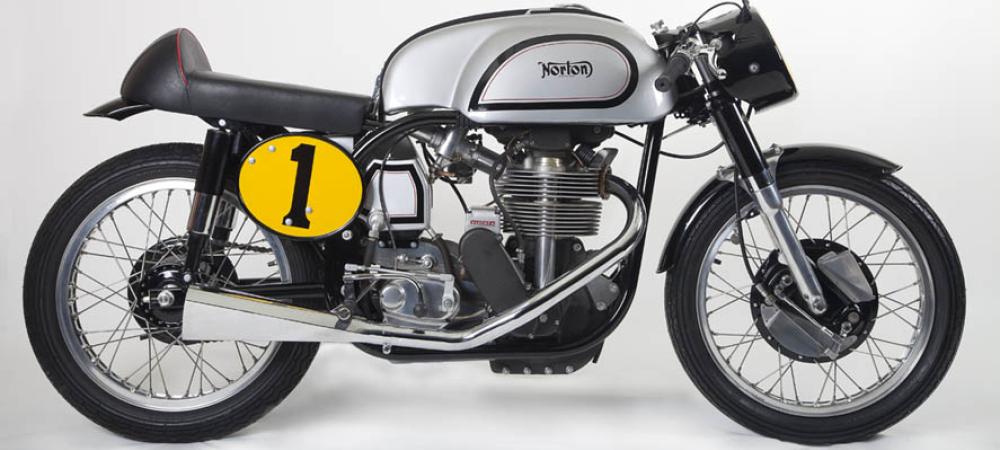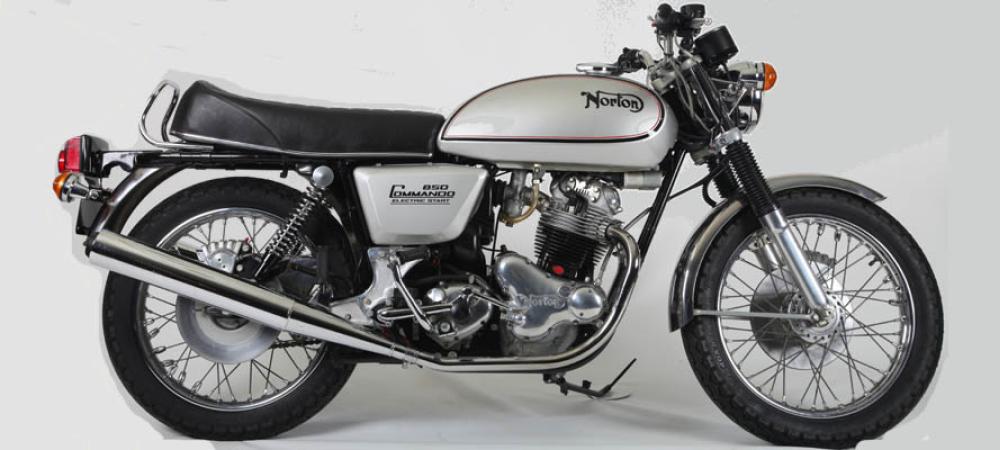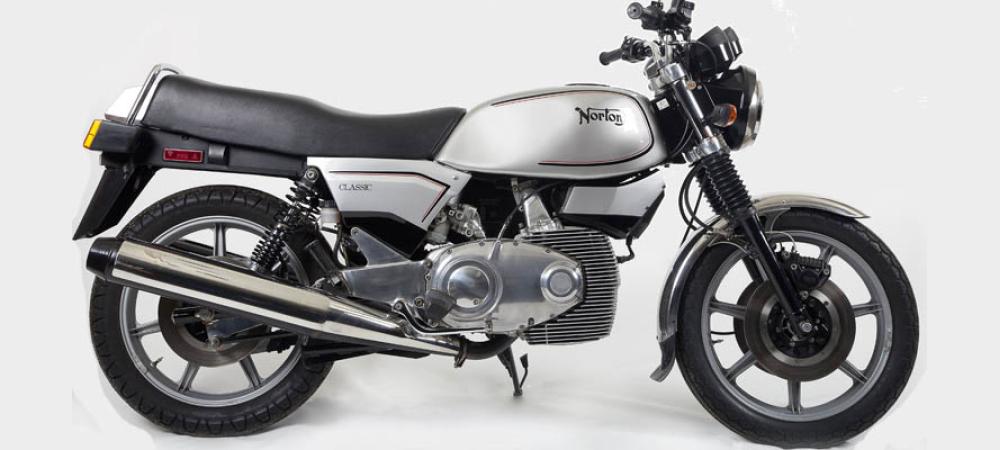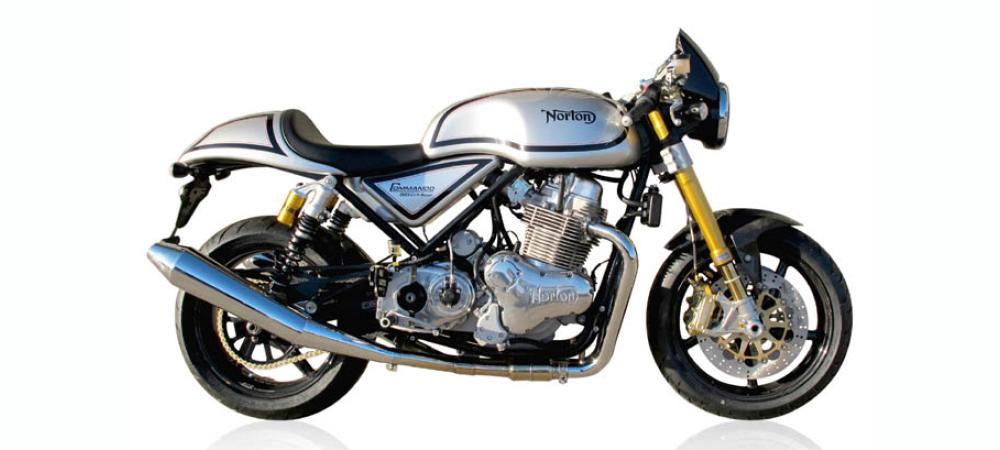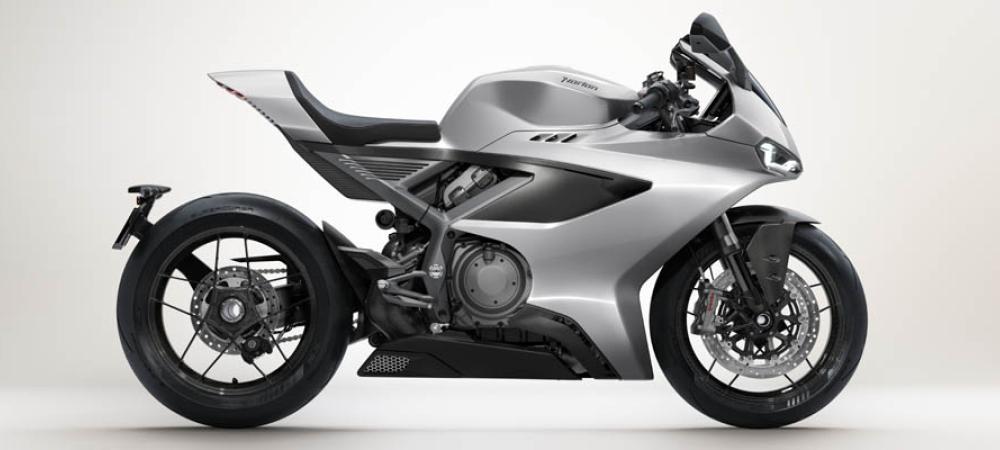A review of correspondence from NOC-L
The Commando triplex primary chain can be replaced with a belt drive;
but are they more or less elastic than the chain or even a substitute for a cush drive?
Belt drives are not cush drives
| I am considering fitting a belt drive and Commando clutch to my Dominator |
This is not a good idea at all. Drive mechanisms need a resilient medium to dampen shock during gear shifts. To achieve this, the Dommie clutch has a rubber cush centre, which incidentally is something that Royal Enfield innovated in the 1920s. This cush mechanism is vital to the health of your gearbox.
The Commando clutch has a solid centre, which will in short order knacker the gears ... the early Commando had this design flaw, and owners of those bikes paid the price. Norton fitted a simple cush mechanism to the rear wheel eventually, but it was not until the Mk.lll that the Commando got a truly effective cush drive again.
Do not make the assumption that the belt has any resilient qualities: it has none to speak of. If you wish to fit a belt drive, you might consider fitting a Commando rear wheel to the Dommie ... it should fit with little work.
Greg Kricorissian (grkricor@ccs.carleton.ca) on NOC-L 23rd. Mar 1997
Belt drive vs. chain drive elasticity - a theoretical comparison
The redesign of the Commando transmission was assigned to the Villiers design team back in 1967. Villiers of course had no other experience than with their two-strokes. Knowing that most two-strokes don't have a primary cush drive due to even firing (flat torque pulses), this may explain the design philosophy behind the Commando transmission.
It's interesting to note that even small Japanese four-cylinder four stroke motorcycle engines make use of a cush coupling within the clutch or engine sprocket. Typically, the volumes of these cushes are larger than the traditional British design (by virtue of a large diameter cush). When discussing primary drives, the question is not if one type of drive has less resilience than another, because all types of tension drives will eventually extend .
The aim with belt drives is to:-
- increase elasticity of the drive
- reduce mechanical noise
- soften torque pulses
- act as a damper against torque vibrations
- offer a transmission capable of running without lubrication
- reduce service requirements to a minimum
- provide drive with negligible wear of sprockets
- provide a drive with high transmission power/weight ratio
- provide a high degree of efficiency
In general terms, the drawbacks of using synchrobelt drives (toothed belts) are:-
- slightly increased bearing loads over chain drives due to pretension requirements
- danger of sudden rupture by overloading
- danger of permanent damage by trapping loose objects such as screws
- running noise (true for single strand chain, but maybe not for triplex Commando chain)
- some lack resistance to higher temperatures, oil and water
- cost of manufacture/acquisition
In contrast, chain drives provide these gains over rubber drives:-
- reduced bearing loads (no pretension)
- insensitivity to higher temperatures, oil and water
- still higher transmission power/weight ratio
- still higher degree of efficiency
The drawbacks of using chain drives generally are:-
- danger of permanent damage by trapping loose objects such as screws
- inherent inelasticity, - wear of sprockets and chain calls for expensive replacement
- chain oscillation with smaller sprockets (the polygon effect, on 16T sprockets and below)
The elasticity per unit length is defined as
1/R* = Unit Displacement / Force = 1/ (E*A)
| E | = Young's modulus of elasticity |
| A | = average cross area of drive strand |
| R* | = spring stiffness per unit length |
|
SINGLE
CHAIN
|
TRIPLEX
CHAIN
|
BELT | |
| DIMENSIONS | 0.5" x 0.307" | 0.375" x 0.250" | Polyamide or Polyester 32mm |
| E | 210 GPa | 210 GPa | 700 GPa |
| A | 50mm2 | 83mm2 | 160mm2 |
The scaled elasticity 1/R* calculates to:-
|
SINGLE
CHAIN
|
TRIPLEX
CHAIN
|
BELT | |
| 1/R* | 9.5 x 10-8 1/N | 5.7 x 10-8 1/N | 9.0 x 10-6 1/N |
So, a 32mm belt drive provides approximately 95 and 158 times more elasticity respectively than chain options (effective strained length assumed constant). Steel backed belts are not accounted for - no data are available - but elasticity will be lowered.
I am uncertain as to whether using a belt drive will appreciably alleviate the gearbox load in the end, especially if a belt with steel reinforcement is used. The answer is probably 'sufficiently', due to the limiting loads of the Norton/AMC box in conjunction with the Atlas/Commando engine.
The above values are approximate and not intended for dimensioning a drive.
Knut Soensteby (knut.sonsteby@lhg.hib.no) on NOC-L 24th. Mar 1997
Belt drive elasticity is still no substitute for a cush drive
| True enough Knut, and thank you for the additional data you provided on the belt drive topic.. I should have used the term 'elasticity' instead of 'resilience'. However, I must disagree with your conclusion, when you went on to say, "a 32 mm belt drive provides approximately 95 and 158 times more elasticity ..... steel backed belts are not accounted for ..... but elasticity will be lowered. I am uncertain of whether using a belt drive will alleviate the gearbox ..... |
Commercial belt drive conversions I've seen for British bikes have steel reinforced belts, which I agree provide much less elasticity than the Polyamide or Polyester types for which you quoted figures. Although I have no better data than you on the elasticity of the steel reinforced belts; even 1000 times the (tiny bit of) elasticity inherent in a triplex chain is still not very much.
Moreover, even with a Polyester reinforced belt, how can it provide the elasticity of a well-designed cush drive, yet maintain the required mesh of the belt teeth with the drive sprockets, without severe wear of the teeth? I agree the belt drive has some wonderful advantages, but with due respect, I hold that it is not a suitable substitute for a cush drive.
Greg Kricorissian (grkricor@ccs.carleton.ca) on NOC-L 24th. Mar 1997
Belt drive overheating - a vented primary chaincase cover
| I have converted my Mk.lll primary drive to a belt drive, enclosed in the original casings but it seems to run very hot |
Skip Schloss, (skippy@cyberport.net), who is on the Brit-Iron list studied the overheating problem and has developed a CNC operating program to cut cooling holes in Norton primary covers. According to those who have seen his work, the pattern is quite attractive and look especially good when polished.
In a recent post to Brit-Iron, Skip says that costs for setting up to run a single primary cover run about US$150 per unit, but that can be reduced if several primary covers can be done at once.
Charles R. Lipton (crlipton@iac.co.jp) on NOC-L 26th. May 1998
Another vented primary chaincase cover
If you want to see a picture of a drilled primary there is one on the NSW Australia NOC site at http://www.amaze.net.au/~we/index.html.
Follow the link off the front page to the pics of bikes by Kenny Dreer and look at the red one.
Chris Ghent (we@amaze.net.au) on NOC-L 26th. May 1998
Adjusting belt drive tension
| How does one adjust a primary belt in a drive setup which has no adjustment? |
The simple answer is you don't !!
If the setup is made correctly, since the centres of the two shafts are constant, i.e. the Commando fixed length inner case, the belt pulleys are made to be the correct pitch for the belt. As the belt never stretches appreciably, there is no adjustment, and no need for the tensioner. It does work.
Angelo (rubberboy@dial.pipex.com) on NOC-L 26th. May 1998

